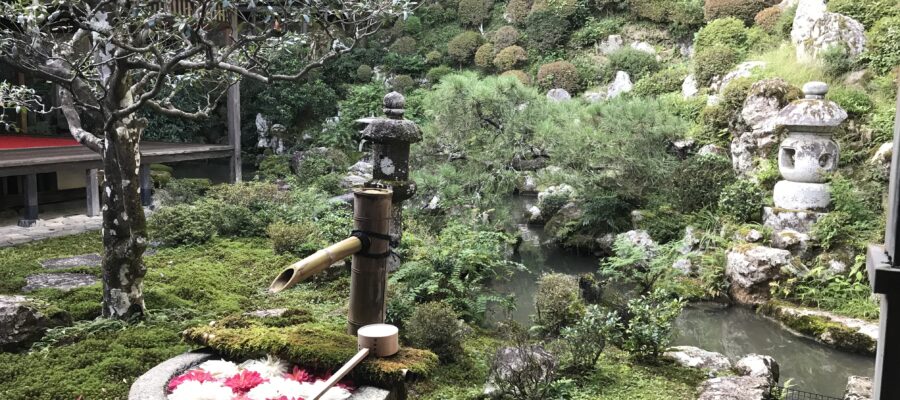タクシーで行くしか選択肢なし
京都から大阪へ戻る途中、比較的新しい阪急京都線の西山天王山駅で降車し、タクシーにのりました。毎月17日にしか、シャトルバスが出ず、タクシー以外の選択肢はありませんでした。だいぶ山の中にはいって、ようやく山門が見えてきました。
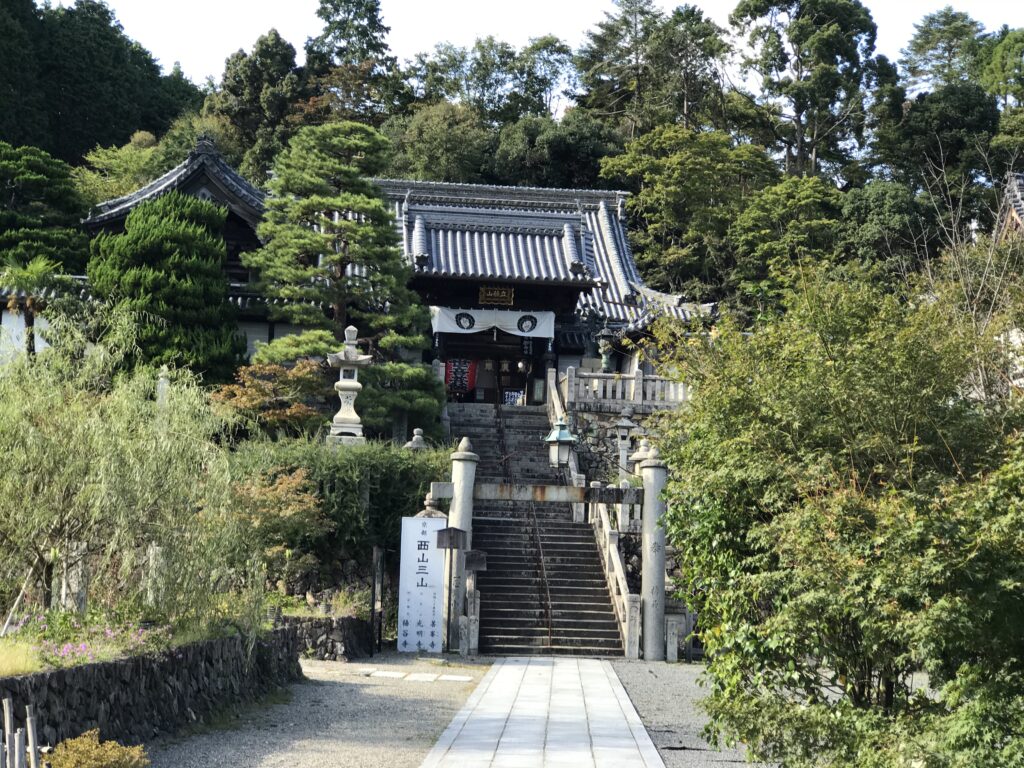
仁王さんではなく、風神と雷神
帰りはどうやって帰ろうかなと思いつつ、山門に近づくと、奇妙が光景が目に止まりました。ここには仁王さんではなく、門の左側に風神の像、右側に雷神の像が立っていて参観者を出迎えてくれます。これは、初めてのパターンかも知れません。
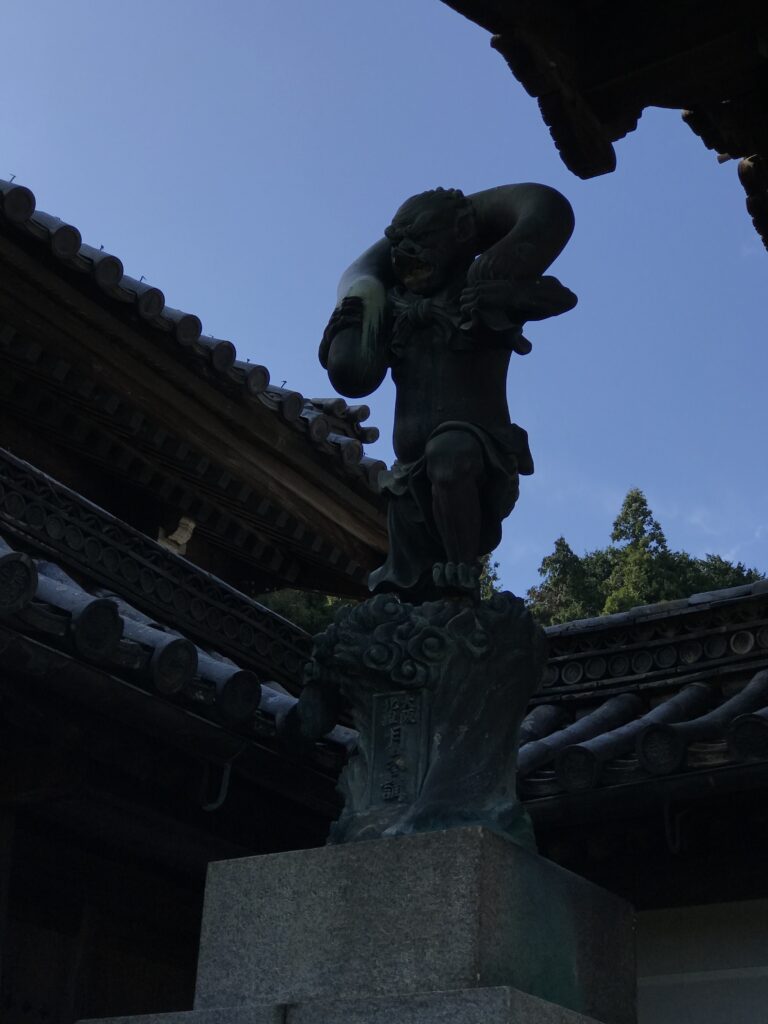
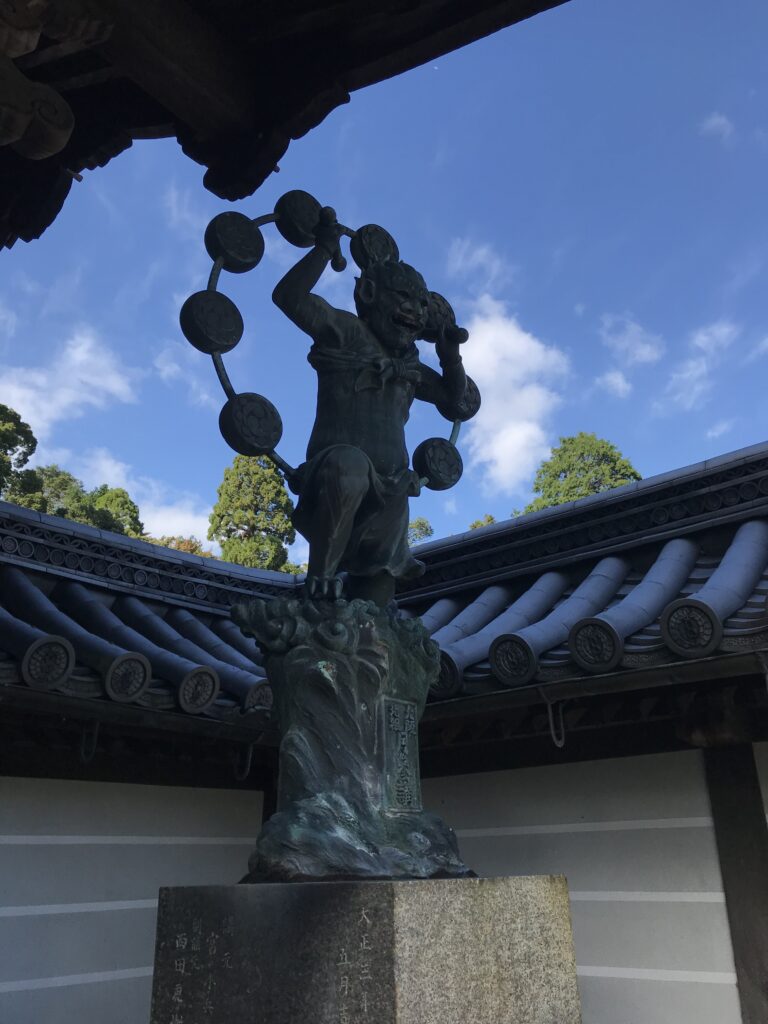
本堂でのお参りを済ませ、そこから書院を見学させていただきます。書院からは手入れされた名勝庭園の浄土苑を鑑賞することができます。訪問した時と季節は異なりますが、ここにはツツジが植えられており、そちらも有名だそうです。
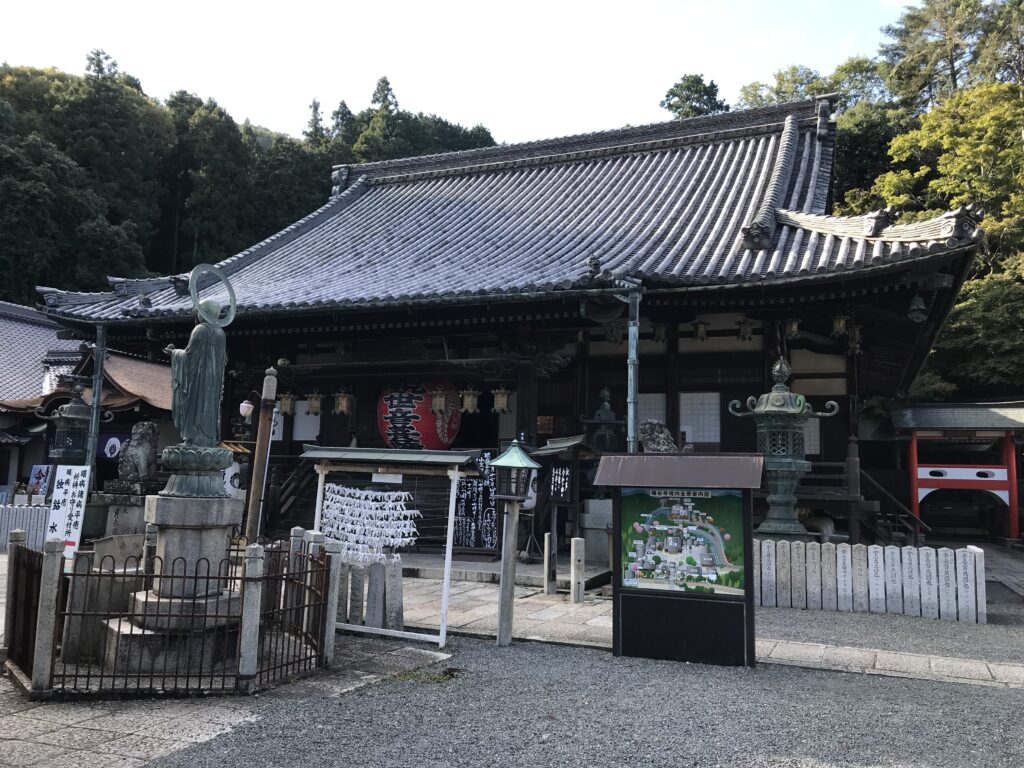
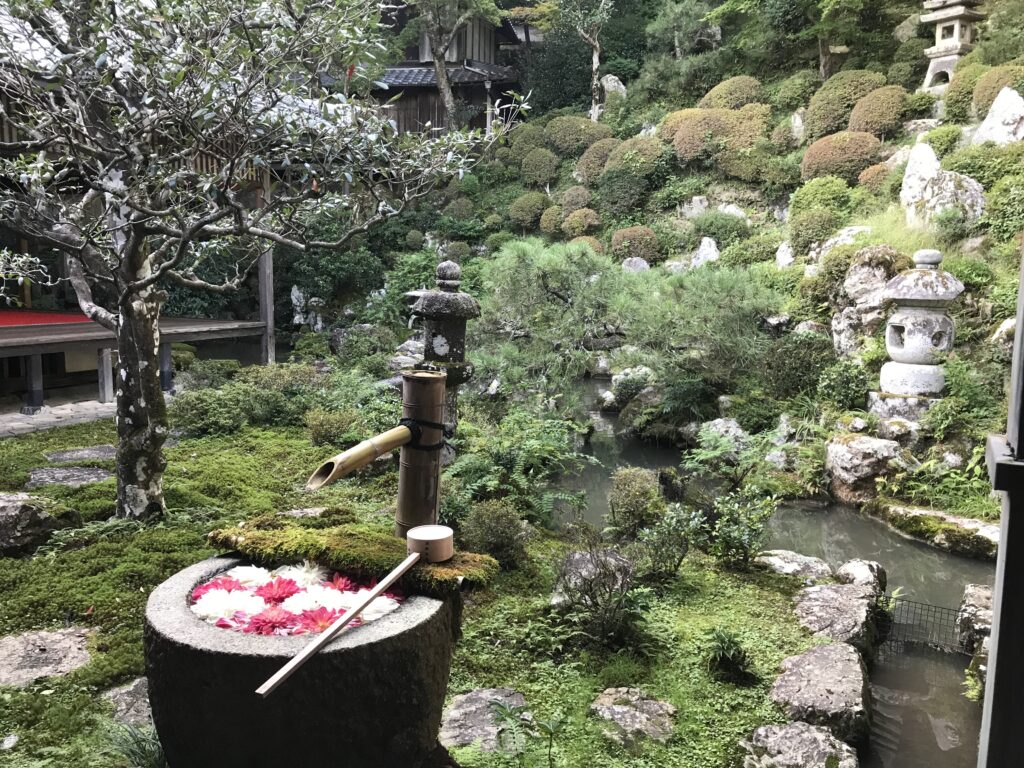
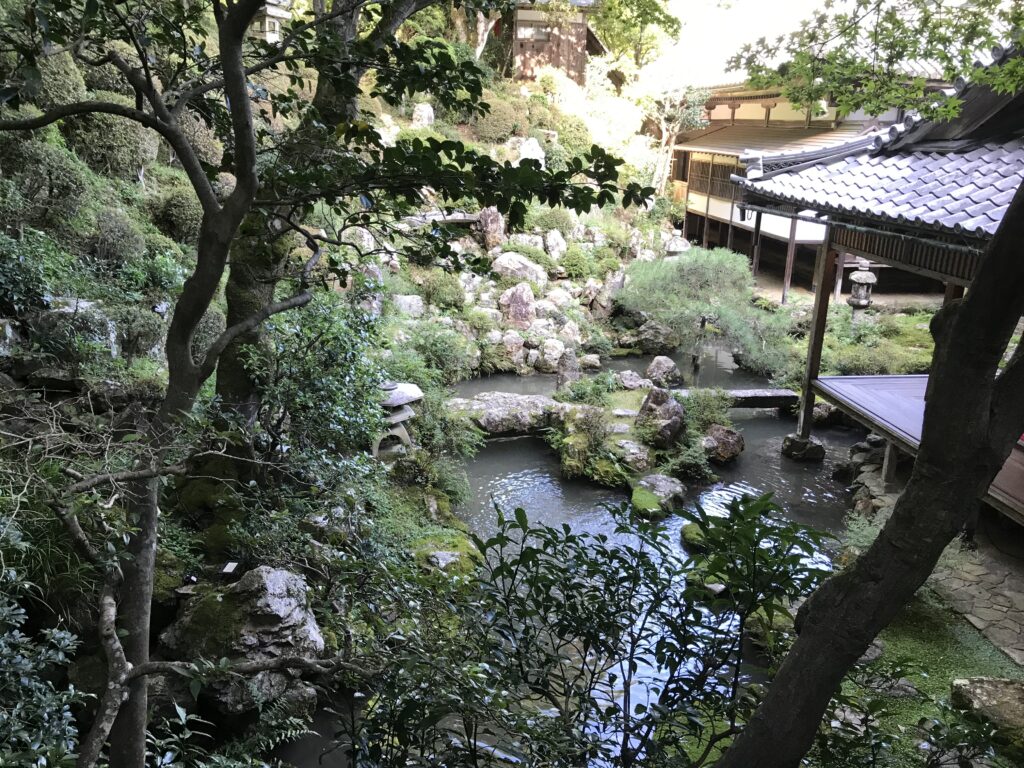
モリアオガエルも住んでいます
建物を出て奥の院まで歩いてみました。天然記念物のモリアオガエルが生息する池が横にあります。天然記念物の生き物というと、どこか遠くの田舎や孤島にでも行かないと見れないのかなと思っていましたが、案外と人が住む近くにもいるものだと感心しました。
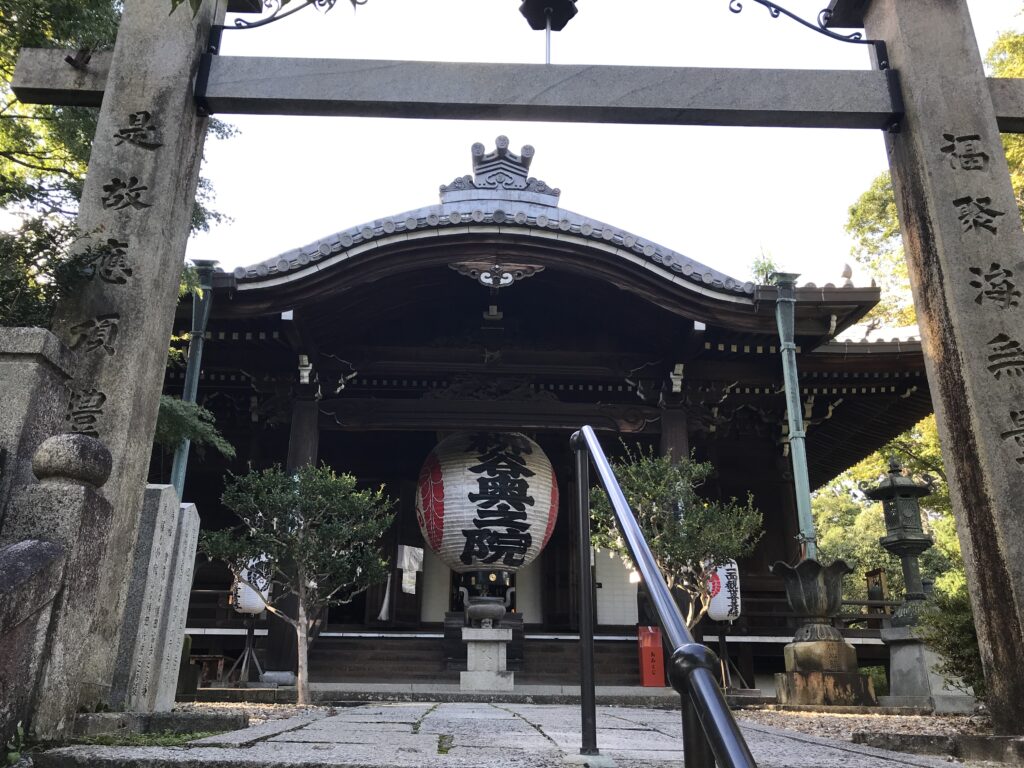
霊水で目を洗って帰ります
このには、もう一つ有名なものがあります。それは、独鈷水(おこうずい)です。弘法大師、空海が訪れた際、ここの湧き水で、母猿が子猿の目を洗っていたそうです。そして、眼の病に苦しむ人々への霊水にしたという伝説があります。私も近視と老眼ですので、霊水で洗眼をして帰りました。ちなみに帰りは下りだったので、駅まで歩いてみました。遠かったのですが、この辺りは竹の産地で、青々とした竹林を抜けるのは心地よかったです。(完)
楊谷寺の御朱印
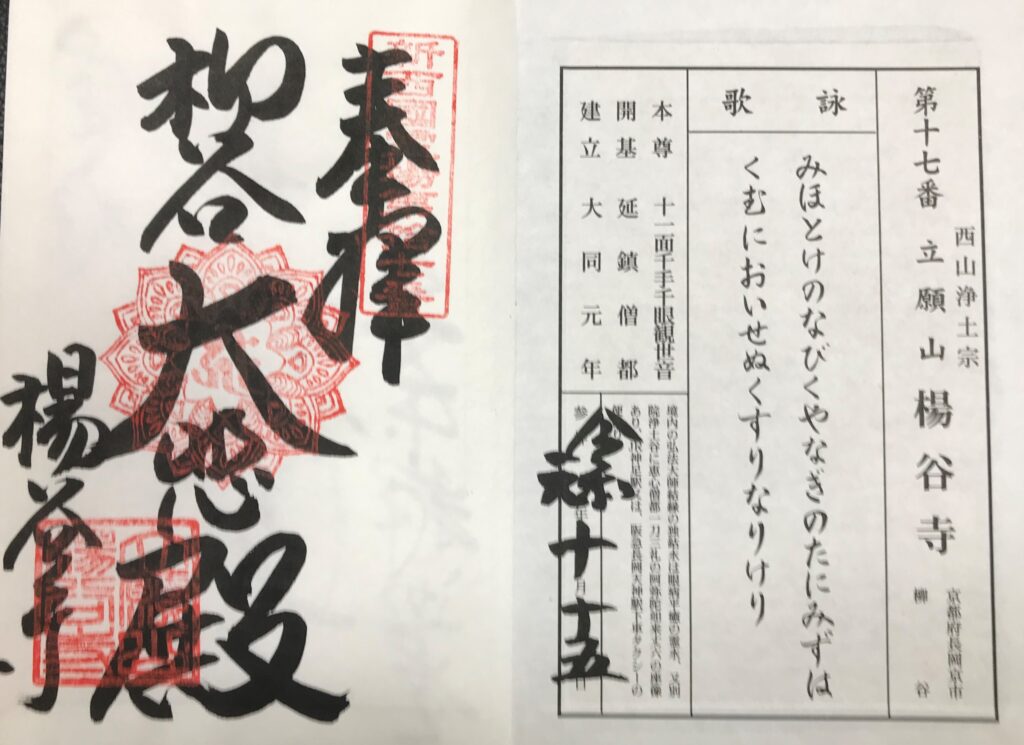
京都のお土産
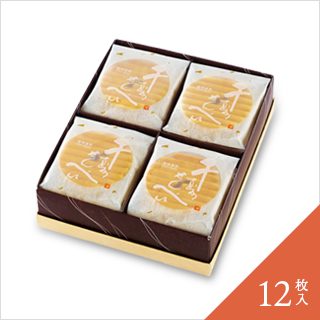
価格:1,728円
(2021/11/20 20:51時点)
感想(14件)
Yokokuji Temple (Kyoto)
The only option is to take a cab.
On the way back to Osaka from Kyoto, I got off at the relatively new Nishiyama-Tennozan station on the Hankyu Kyoto line and took a cab. The only shuttle bus service is available on the 17th of every month, so there was no other option but to take a cab. I finally came to see the gate of the temple after entering the mountain.
Not Niou-san, but the Wind God and Thunder God
As I approached the temple gate, wondering how I was going to get home, a strange sight caught my eye. Instead of a Niou-san, a statue of the wind god stands to the left of the gate and a statue of the thunder god to the right, welcoming visitors. This may be the first time I have seen this pattern.
After paying my respects in the main hall, I visited the Shoin from there. From the Shoin, I could admire the well-maintained Jodoen, a garden of scenic beauty. Although the season was different from the time of my visit, azaleas were planted there and were said to be famous as well.
The forest green tree frog also lives here.
I left the building and walked to the inner sanctuary. There was a pond next to the building that was inhabited by the Mori green tree frog, a natural monument. I had thought that I would have to go somewhere far away in the countryside or on an isolated island to see these creatures, but I was surprised to find them in the neighborhood where people live.
I went home to wash my eyes with the sacred water.
There is one more famous thing in this area. It is the “Okozui” water. It is said that when Kobo Daishi (the great Buddhist priest) Kukai visited here, a mother monkey used the spring water to wash her baby monkey’s eyes. Legend has it that the water was used as a sacred water for people suffering from eye diseases. Since I am also nearsighted and presbyopic, I washed my eyes with the sacred water and returned home. By the way, I walked to the station because it was downhill on the way back. It was a long way, but it was pleasant to walk through the lush bamboo forest, as this area is a bamboo production area. (End)
Temple Yokokuji (Kyoto)
La seule option est de prendre un taxi.
Sur le chemin du retour de Kyoto à Osaka, je suis descendu à la station relativement nouvelle de Nishiyama-Tennozan sur la ligne Hankyu Kyoto et j’ai pris un taxi. Le seul service de navette est disponible le 17 de chaque mois, il n’y avait donc pas d’autre choix que de prendre un taxi. Je suis finalement arrivé à voir la porte du temple après être entré dans la montagne.
Pas Niou-san, mais le Dieu du Vent et le Dieu du Tonnerre.
Alors que j’approchais de la porte du temple, me demandant comment j’allais rentrer chez moi, un spectacle étrange a attiré mon attention. Au lieu d’un Niou-san, une statue du dieu du vent se trouve à gauche de la porte et une statue du dieu du tonnerre à droite, accueillant les visiteurs. C’est peut-être la première fois que je vois ce motif.
Après avoir présenté mes respects dans le hall principal, j’ai visité le Shoin de là. Depuis le Shoin, j’ai pu admirer le Jodoen bien entretenu, un jardin d’une grande beauté. Bien que la saison soit différente de celle de ma visite, des azalées y ont été plantées et on dit qu’elles sont également célèbres.
La grenouille arboricole verte vit également ici.
J’ai quitté le bâtiment et j’ai marché jusqu’au sanctuaire intérieur. Il y avait un étang à côté du bâtiment qui était habité par la rainette verte de Mori, un monument naturel. J’avais pensé qu’il me faudrait aller loin dans la campagne ou sur une île isolée pour voir ces créatures, mais j’ai été surpris de les trouver dans le quartier où vivent les gens.
Je suis rentré chez moi pour me laver les yeux avec l’eau sacrée.
Il y a une autre chose célèbre dans cette région. Il s’agit de l’eau “Okozui”. On raconte que lorsque Kobo Daishi (le grand prêtre bouddhiste) Kukai a visité cet endroit, une mère singe a utilisé l’eau de la source pour laver les yeux de son bébé singe. La légende veut que cette eau ait été utilisée comme eau sacrée pour les personnes souffrant de maladies oculaires. Comme je suis également myope et presbyte, j’ai lavé mes yeux avec l’eau sacrée et je suis rentré chez moi. D’ailleurs, j’ai marché jusqu’à la gare car le chemin du retour était en descente. C’était un long chemin, mais il était agréable de marcher à travers la forêt de bambous luxuriante, car cette région est une zone de production de bambous. (Fin)
